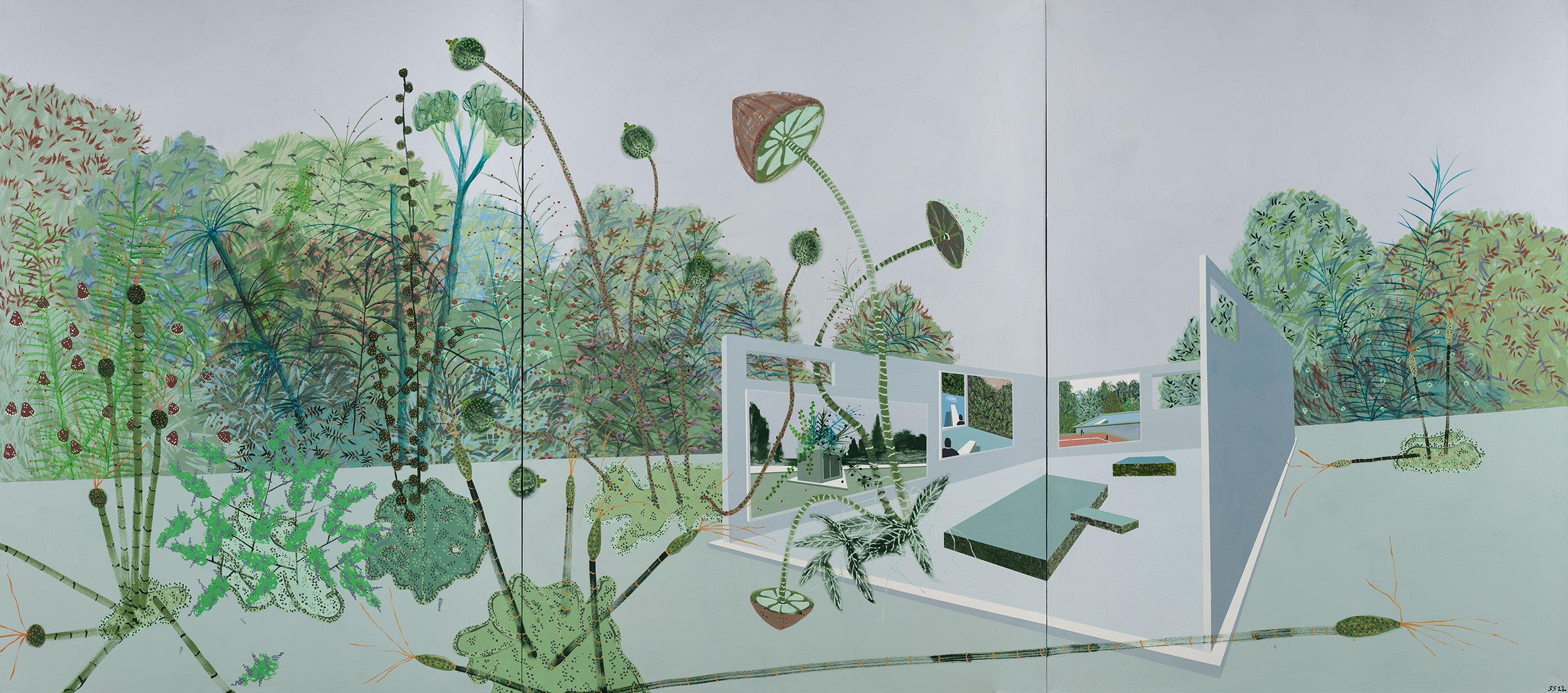Sandra Strele
Sandra Strēle graduated in 2016 from the Art Academy of Latvia, acquiring her master's degree at the Department of Painting, also she had spent one semester as part of a student exchange programme at the Royal Academy of Fine Arts in Antwerp. She has received the visual arts scholarship of the Boris and Ināra Teterev Foundation in 2012, the Brederlo von Sengbusch Art Prize in 2014, the SEB Banka scholarship in painting in 2016, prestigious grants from Elizabeth Greenshields foundation in Canada in 2019 and 2021, and Young Painter Prize in 2019. Sandra Strēle has held a number of solo exhibitions, participated in group exhibitions and artist residences in Italy, Belarus, Estonia, Lithuania, Norway, India, Belgium, Germany, France and elsewhere.
Could you tell us more about your background and how you began creating art?
For as long as I can remember, I have always had the desire to tell stories. For several hours every night, my pa invented tales, thus developing my passion for creating different fictitious, illusory subworlds. Every story I create now is a continuation of the previous one - like a series in which its protagonists do not age, but experience new transformations. They are affected by time, predictions of the future, or invented future scenarios, as well as reflection and devotion to memories of the past.
What does your art aim to say to its viewers?
In my creative work, I create large-scale installations based on classic painting - a series of paintings that, in chronological order, advance from one story to another. I focus on creating and interpreting secluded, alienated, sometimes lonely places, their architecture, and fictitious everyday scenes, offering the viewer the role of an observer. The painted places and landscapes in each series of paintings preserve some of their attributes from the previous one and simultaneously offer the viewer to perceive the changes and transformations that have occurred. In painting, I try to introduce cinema aesthetics, where frame replaces frame. In my work, painting replaces painting, and they are all subject to a single time system, which is simultaneously seemingly real and veritable, but at the same time abstract. Building on the idea of a holographic universe, I try to merge the planes of the past, present, and future, but at the same time offer the viewer small edges of reality that for a moment can be read off these points of overlap. There is always a story or even an infinite set of stories among the serial paintings. What fascinates me most in painting is this opportunity to create a large number of stories, stemming from one original narrative.
Can you tell us about the process of creating your work? What is your daily routine when working?
I attach great importance to the size of the paintings. That is why I usually create large-scale paintings that encourage the viewer to perceive painting as a physical experience.
Large-format painting requires systematic work, so for me painting, preparing for, for example, a large solo exhibition, is a full-time job. Sometimes it happens that I paint about 25 paintings in the size of 200 x 450 cm in a year. In order to do this, of course, you have to plan your time, and sometimes you have to refuse parties or trips to your friends. On the busiest days, I start painting in the morning and finish in the evening. Before or after painting, I like to go to the pool or play tennis. Swimming pools and tennis courts are also among the elements that often appear in my works.
What is the essential element in your art?
The most important element in my works is the story. In painting, the story that develops from one series of paintings to the next is like a slow-motion picture, in which the events can be read directly between the slowly changing frames. In this long story, there are also several characters or elements that tend to repeat themselves in several successive paintings, thus encouraging the viewer to consider possible scenarios of what happened or could happen.
In your opinion, what role does the artist have in society?
In my opinion, the role of an artist is to encourage thinking and offer different ways of thinking. I think that an artist nowadays is like a mediator between different areas of life, because he is able to combine anything with anything in the process of creating art. Historically, this was not the case. Art theorist Arthur Danto would say that this is possible only in the era after the end of art in which we live today. If anything can become a work of art, then the role of the artist himself is pluralistic.










